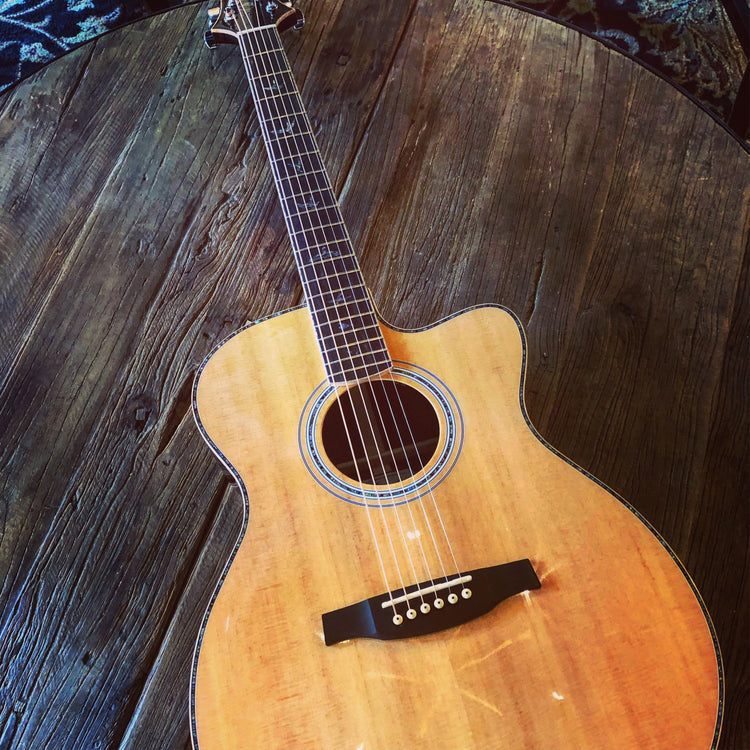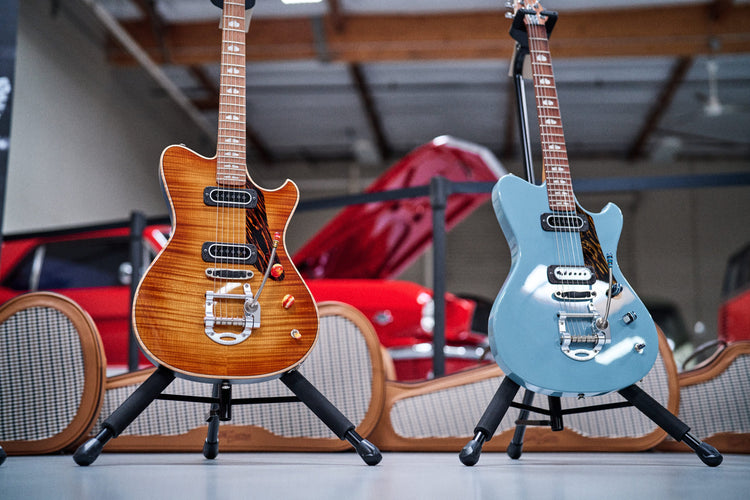Introduction
When it comes to electric guitars, two names stand tall above the rest: the Gibson Les Paul and the Fender Stratocaster. Both instruments have shaped the landscape of music for decades, each bringing its own unique flair to the stage and studio. Whether you're a novice picking up your first guitar or a seasoned player looking to dive deep into tonal nuances, understanding these iconic models is essential. So, The Gibson Les Paul vs. Fender Stratocaster: Which One Is Right for You? Let's break down their differences, similarities, and what might suit your style best.

The Gibson Les Paul: A Legend in Its Own Right
1. History of the Gibson Les Paul
The Gibson Les Paul was born out of a collaboration between guitar designer Les Paul and Gibson’s innovative team in the early 1950s. Initially launched in 1952, this solid-body electric guitar has become synonymous with rock 'n' roll.
2. Body Shape and Design
With its single-cutaway design, the Les Paul boasts a weighty mahogany body topped with carved maple. This classic combination not only gives it an elegant appearance but also contributes to its signature sustain and rich tones.
3. Pickups: Humbuckers vs. Single-Coils
A standout feature of the Gibson Les Paul is its use of humbucking pickups which help eliminate unwanted noise while delivering warm, full-bodied sound.
4. Tonewood Selection
Gibson uses premium tonewoods like mahogany for the body and neck while opting for guitar store maple tops that enhance brightness and clarity.
5. Scale Length and Playability
The scale length on a Les Paul is typically 24.75 inches, creating a slightly warmer tone compared to other guitars with longer scales.
6. Sound Profile of the Les Paul
Expect thick midrange tones with substantial sustain when playing a Gibson Les Paul—perfect for rock solos or blues riffs.
7. Iconic Players Who Use the Les Paul
From Jimmy Page to Slash, many legendary guitarists have wielded the Les Paul as their weapon of choice.
Fender Stratocaster: The Versatile Workhorse
8. History of the Fender Stratocaster
Introduced in 1954 by Leo Fender, the Stratocaster quickly gained popularity due to its ergonomic design and versatile sound.
9. Body Shape and Design
With its contoured edges and double-cutaway design, the Stratocaster is both comfortable to play and visually appealing.
10. Pickups: The Magic of Single-Coils
Unlike its counterpart, the Strat features three single-coil pickups that produce bright tones ideal for genres ranging from country to surf rock.
11. Tonewood Selection
Typically crafted from alder or ash bodies paired with maple necks; these materials contribute to distinct tonal characteristics that players love.
12. Scale Length and Playability
Stratocasters usually have a longer scale length at 25.5 inches which results in sharper highs and clearer notes across all registers.
13. Sound Profile of the Stratocaster
Expect sparkling highs and pronounced treble response—a favorite among funk guitarists due to its snappy attack.
14. Iconic Players Who Use the Stratocaster
From Jimi Hendrix to Eric Clapton, countless musicians have made their mark using this beloved model.
Comparing Features: The Great Debate
15. Price Range Comparison
Both guitars can range vastly in pricing depending on models—entry-level options are available at local guitar stores while high-end models can soar into thousands.
| Feature | Gibson Les Paul | Fender Stratocaster | |----------------|---------------------|-----------------------| | Starting Price | $1,000 - $2,500+ | $500 - $3,000+ | | Premium Models | Upwards of $5,000 | Upwards of $3,500 |
16. Weight Considerations
Les Pauls tend to be heavier due to their solid construction while Strats are generally lighter making them easier on long gigs.
17. Neck Profile Differences
Neck profiles vary significantly; Les Pauls often feature thicker necks compared to more slender options found on Strats—affecting playability based on personal preference.

Playing Styles: Which Guitar Fits Your Genre?
18. Rock & Metal with Les Pauls
If you’re aiming for rich distortion sounds in rock or metal genres—the LP's humbuckers give you that edge gibson sg guitars needed for heavier music styles.

19. Blues & Jazz with Strats
For smooth blues licks or jazzy solos needing clarity—Strats shine here thanks to their articulate tones produced by single coils.
Tone Shaping Options
20. Amplifier Pairings for Each Guitar
Pairing your instrument with an appropriate amplifier can drastically change your sound profile:
- For Les Paul, consider tube amps known for warmth. A Strat pairs well with brighter solid-state amplifiers or boutique styles offering clean tones.
Maintenance Tips for Longevity
21. Caring for Your Guitar’s Finish
Regular cleaning helps maintain aesthetic appeal; avoid harsh chemicals that could strip paint over time!
FAQs
Q1: Which guitar is better for beginners?
A: It often depends on personal preference! The Fender Strat might be more forgiving due to lighter weight and versatile sound options but many beginners start happily on either model!
Conclusion
Choosing between a Gibson Les Paul and a Fender Stratocaster isn't just about specs; it's about how each instrument feels in your hands as you create music that resonates within you! Both guitars offer something unique tailored towards different playing styles—exploring them firsthand will ultimately lead you closer towards finding out exactly what fits within your musical journey! So head down to your local guitar store today; who knows—you might just find the one waiting there!
Whether you're leaning toward powerful rock riffs or crisp blues solos—your decision boils down not just technicalities but what inspires you creatively! Remember that both guitars represent decades worth of history and innovation; so embrace whichever path calls out most vividly—and let your musical adventure begin!